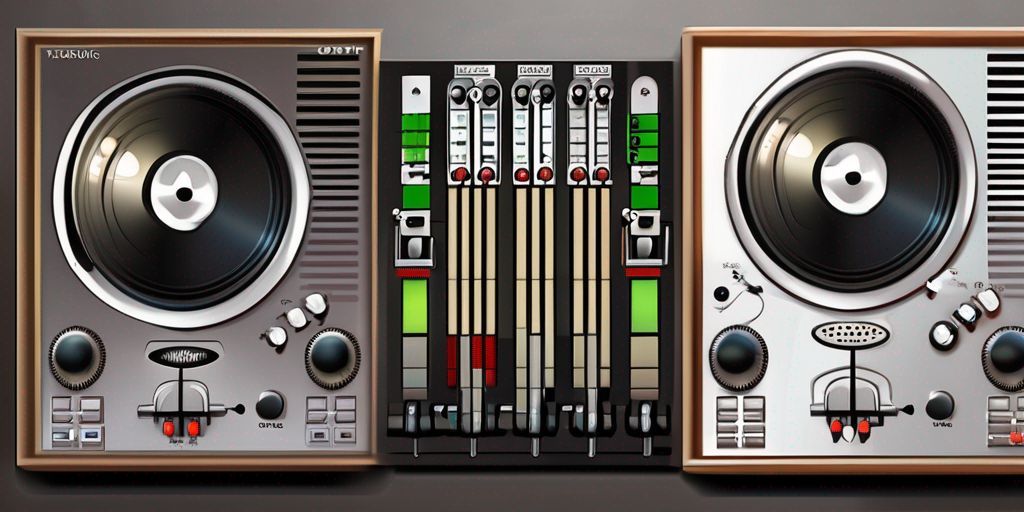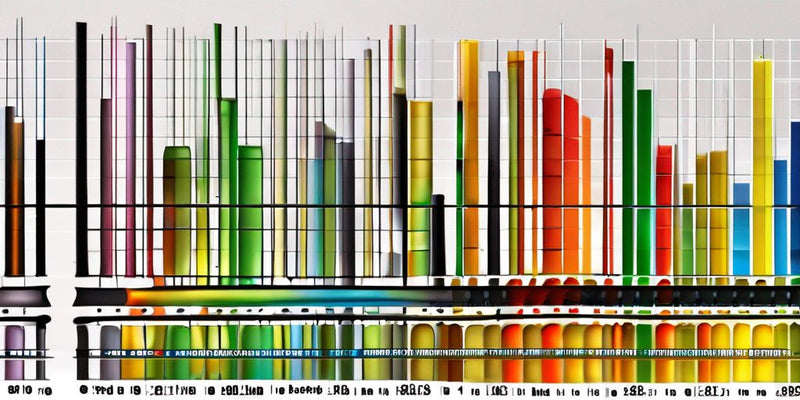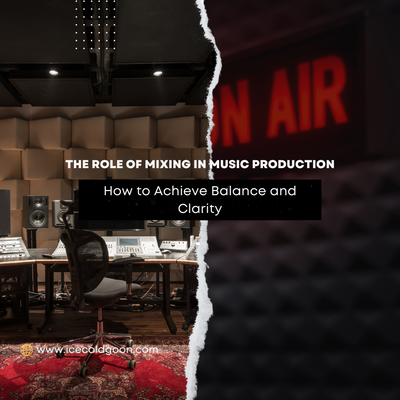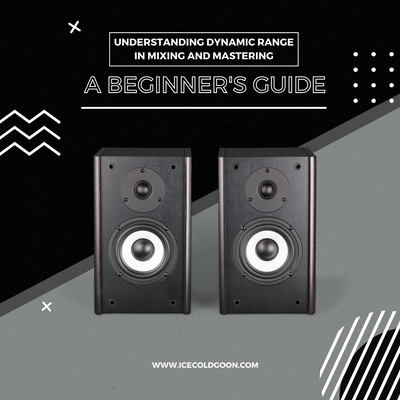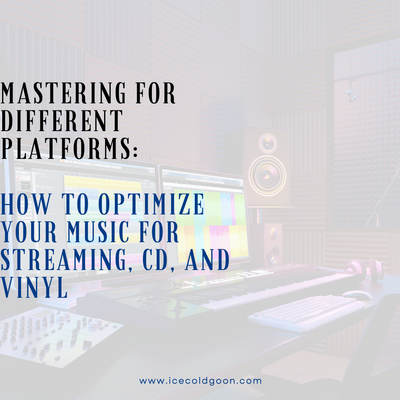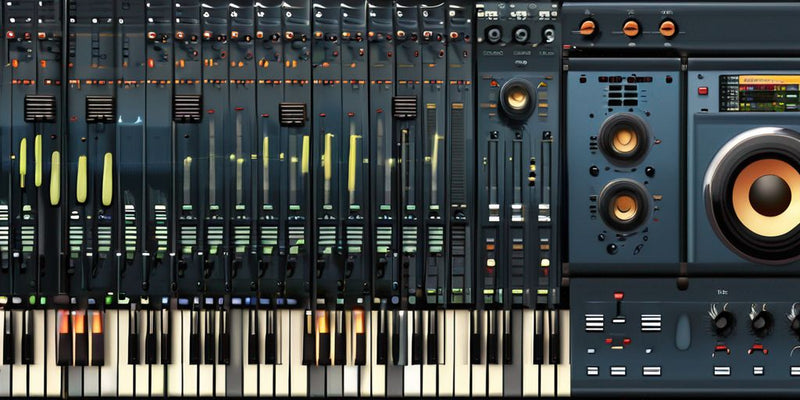Tracking Vs Mixing
Overview
Definition of tracking
Tracking is the process of monitoring and tracing the movement or location of objects or individuals. It involves using various techniques and technologies to gather and analyze data in real-time. Tracking is widely used in logistics, transportation, and supply chain management to ensure efficient operations and improve productivity. It provides valuable insights into the status and progress of different processes, allowing organizations to make informed decisions and take necessary actions.
Definition of mixing
Mixing combines multiple audio, video, or graphic sources to create a unified output. It involves blending different elements together to produce a cohesive and harmonious result. Mixing techniques are commonly used in various industries, such as music production, film and television, and graphic design. By manipulating the levels, tones, and effects of each source, mixing allows for creating dynamic and engaging content that captures the audience's attention. It plays a crucial role in enhancing multimedia projects' overall quality and impact.
Importance of tracking and mixing in various industries
Tracking and mixing techniques play a crucial role in various industries. These techniques enable businesses to efficiently manage operations, improve productivity and accuracy, and enhance customer satisfaction. In logistics and supply chain industries, tracking technologies like GPS tracking, RFID tracking, and barcode tracking provide real-time visibility of assets, helping businesses optimize their inventory management and reduce costs. On the other hand, mixing techniques like audio, video, and graphics are essential in entertainment and media production, allowing professionals to create captivating and immersive experiences for their audiences. By implementing tracking and mixing techniques, businesses can gain a competitive edge, streamline their processes, and deliver exceptional results.
Tracking Techniques
GPS tracking
GPS tracking is a widely used technique for real-time location monitoring in various industries. It utilizes a network of satellites to accurately track the position of objects or individuals. GPS tracking offers several benefits, including increased efficiency, improved safety, and better asset management. It is commonly used in logistics, transportation, and fleet management to track vehicles and monitor their routes and performance. GPS tracking is also used in personal tracking devices and sports applications for monitoring activities and performance. GPS tracking plays a crucial role in enhancing productivity and ensuring the security of assets and individuals.
RFID tracking
RFID tracking is a technique that uses radio frequency identification technology to track and identify objects. It involves attaching RFID tags to items, which RFID readers can then scan to capture data about their location and movement. This method is widely used in logistics, retail, and healthcare industries to improve inventory management, reduce errors, and enhance supply chain visibility. RFID tracking offers real-time tracking capabilities, allowing businesses to monitor the movement of their assets and make data-driven decisions. It provides a more efficient and accurate way to track and manage inventory than traditional manual methods. By implementing RFID tracking, organizations can streamline their operations, improve customer satisfaction, and gain a competitive edge in the market.
Barcode tracking
Barcode tracking is a widely used tracking technique in various industries. It involves the use of barcodes to uniquely identify and track items. Barcodes are printed on labels or tags and scanned using barcode scanners or mobile devices equipped with barcode scanning apps. The scanned information is then linked to a database, allowing businesses to track the movement and location of their inventory or assets. Barcode tracking is known for its accuracy and efficiency, making it a popular choice for inventory management, supply chain logistics, and retail operations. It provides real-time visibility and helps businesses streamline operations, reduce errors, and improve productivity.
Mixing Techniques
Audio mixing
Audio mixing is a technique used in the music and film industry to combine and balance multiple audio tracks into a cohesive and harmonious final product. It involves adjusting each track's levels, panning, and equalization to create a well-balanced and immersive audio experience. Professional audio mixing requires a deep understanding of sound engineering principles and the use of specialized software and equipment. It plays a crucial role in enhancing music or film production's overall quality and impact.
Video mixing
Video mixing is a technique used in various industries to combine multiple video sources into a single output. It involves blending, transitioning, and overlaying different video clips to create visually appealing and engaging content. Video mixing is commonly used in live events, broadcasting, and production. It allows for seamless transitions between different camera angles, adding graphics and effects, and creating professional-looking videos. Some popular video mixing software include Adobe Premiere Pro, Final Cut Pro, and DaVinci Resolve. By implementing video mixing techniques, businesses can enhance their visual presentations and deliver captivating content to their audience.
Graphic mixing
Graphic mixing is used in various industries to combine visual elements such as images, videos, and animations to create visually appealing and engaging content. It is commonly used in advertising, film production, and graphic design. Graphic mixing allows designers and artists to manipulate and blend elements to convey a specific message or emotion. Graphic mixing adds depth and creativity to the final output by combining various visual elements. This technique often involves using software tools like Adobe Photoshop and After Effects to achieve the desired effects. Overall, graphic mixing is crucial in enhancing various media projects' visual quality and impact.
Conclusion
Comparison of tracking and mixing techniques
When comparing tracking and mixing techniques, it is essential to understand their respective purposes and applications. Tracking involves monitoring and recording movements or locations, while mixing refers to blending and combining different elements to create a cohesive output. Regarding technology, tracking techniques include GPS tracking, RFID tracking, and barcode tracking, which are widely used in logistics and supply chain management industries. On the other hand, mixing techniques like audio mixing, video mixing, and graphic mixing are commonly employed in the entertainment and media production sectors. Both tracking and mixing play crucial roles in their respective industries, offering unique benefits and contributing to operational efficiency. As technology advances, the integration of tracking and mixing techniques is expected to evolve, leading to more sophisticated and innovative solutions.
Benefits of implementing tracking and mixing
Implementing tracking and mixing techniques in various industries can provide several benefits. Tracking allows businesses to monitor the movement and location of assets, products, or vehicles, enabling more efficient logistics and inventory management. It also enhances security by providing real-time information on the whereabouts of valuable items. On the other hand, mixing techniques, such as audio mixing, video mixing, and graphic mixing, enable the creating of engaging and visually appealing content. This is particularly important in entertainment, advertising, and media production, where high-quality and captivating content is crucial for success. By implementing tracking and mixing techniques, businesses can streamline operations, improve productivity, and deliver exceptional customer experiences.
Future trends in tracking and mixing
As technology advances, the future of tracking and mixing looks promising. Here are some key trends to watch out for:
- AI-powered tracking: Artificial intelligence will be crucial in enhancing tracking capabilities. With AI, tracking systems can analyze and interpret data more efficiently, improving accuracy and real-time insights.
- Integration of tracking and mixing: In the future, we expect to see a greater integration of tracking and mixing technologies. This integration will enable industries to streamline their processes and enhance overall efficiency.
- Enhanced data security: Data security will become a top priority with the increasing reliance on tracking and mixing technologies. Future trends will focus on implementing robust security measures to protect sensitive information.
In conclusion, the future of tracking and mixing holds immense potential for innovation and improvement. By staying updated with the latest trends and advancements, industries can leverage these technologies to gain a competitive edge.

